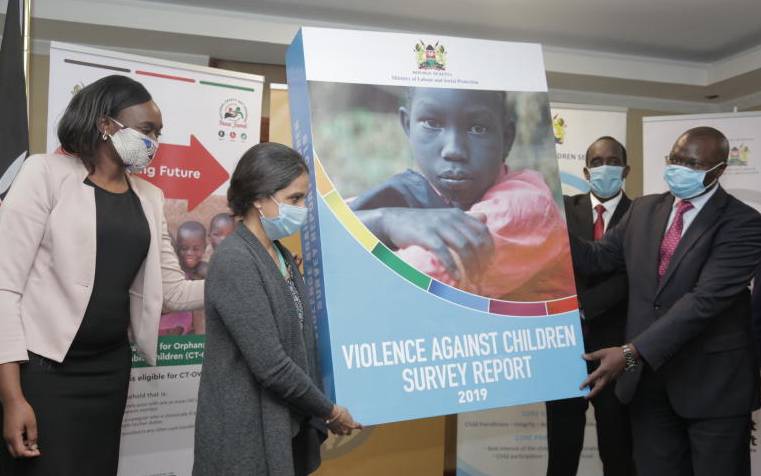×
The Standard e-Paper
Truth Without Fear

The Executive Director LVCT Healthcare Dr Lilian Otiso (left) UNICEF Kenya Representative Maniza Zaman (centre) and Chief Administrative Secretary Patrick Ntutu and Labour CS Simon Chelugui hold a survey report on violence against children after the launch on July 16, 2020, at NSSF Building in Nairobi. [Edward Kiplimo, Standard]
One in two Kenyans aged between 18 and 24 has experienced some form of physical, emotional or sexual violence, a new report has found.